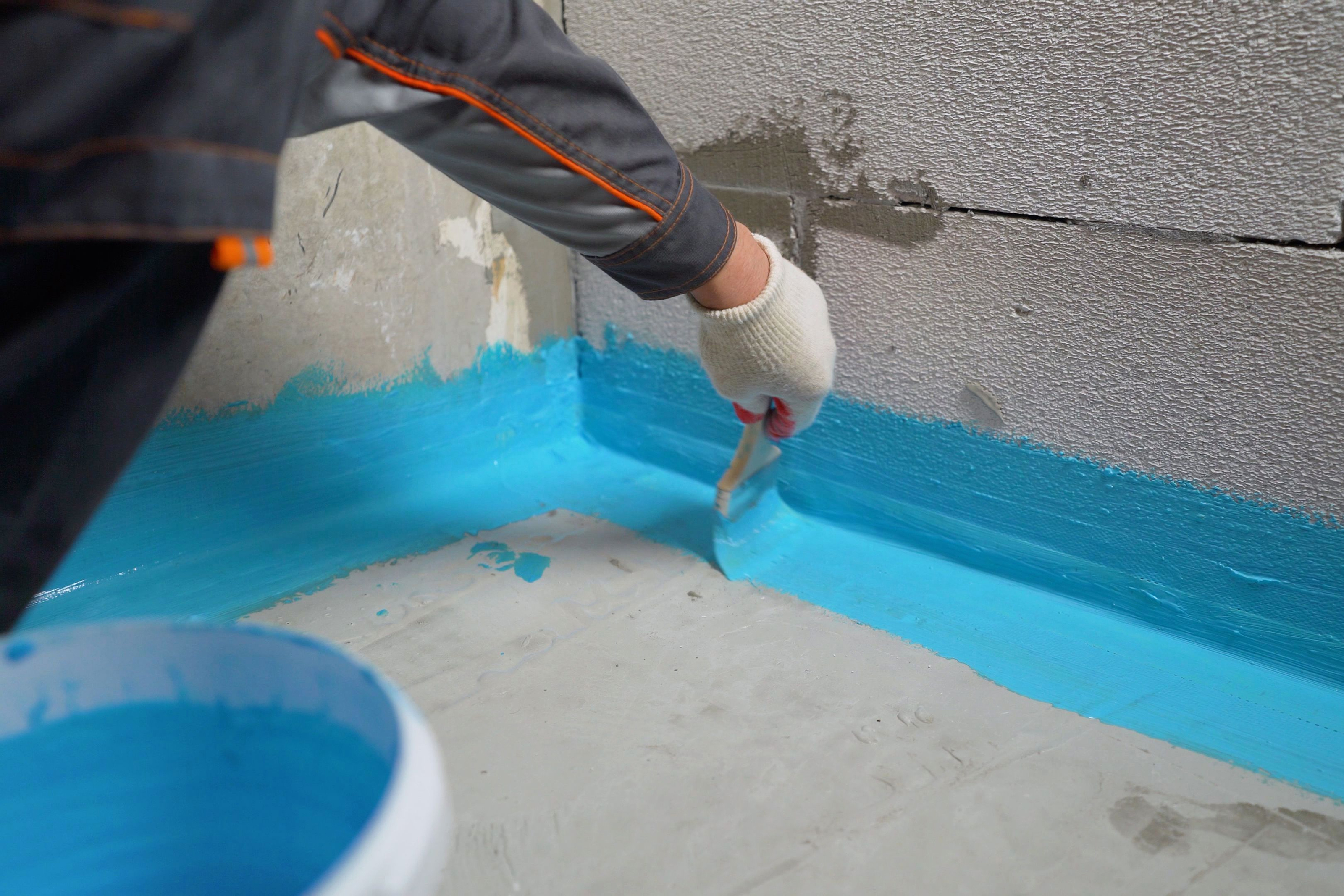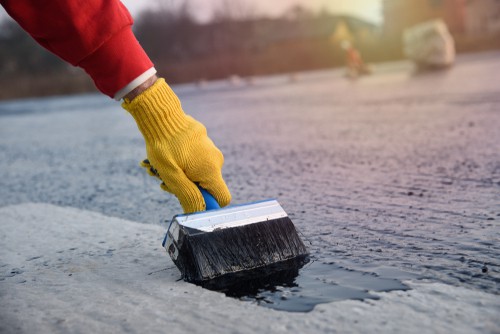Yard drainage Omaha: Real Results from Omaha Homes
Wiki Article
Types of Waterproofing: Checking Out the Numerous Techniques and Their Applications
Waterproofing is a crucial element of building and construction and maintenance. It shields structures from the damaging impacts of water damage. There are numerous methods offered, each with its unique applications and benefits. From membrane layer systems to cementitious options, understanding these choices is crucial for effective execution. The selection of waterproofing technique can substantially impact toughness and long life. Exploring these various methods exposes their distinctive benefits and potential obstacles, triggering additional factor to consider of ideal services.Membrane Waterproofing Systems
Membrane layer waterproofing systems serve as an important obstacle versus water invasion in different structures. These systems typically consist of thin sheets made from materials like rubber, thermoplastic, or bitumen, which are put on surfaces to stop wetness infiltration. They can be mounted over or listed below quality and are especially reliable in areas prone to high water exposure, such as cellars, roofs, and foundations.The installation process includes cleaning up the substrate, applying adhesives or guides, and precisely fitting the membrane to assure full insurance coverage. Membrane layer systems can be either totally stuck, mechanically affixed, or laid loose, depending upon the certain demands of the project. They offer toughness and versatility, fitting structural movements without endangering their waterproofing capacities. These systems can be enhanced with added layers for boosted security. Ultimately, membrane layer waterproofing systems are necessary for securing structures against water damages and preserving lasting stability.Liquid-Applied Waterproofing Coatings
Liquid-applied waterproofing finishings offer a versatile remedy for securing surfaces from water seepage - Yard drainage Omaha. These finishes consist of fluid materials that, when used, form a smooth, flexible membrane layer. Their adaptability permits application on various substratums, including concrete, steel, and wood. The finishes can be used in diverse settings, from domestic to commercial settings, making them appropriate for roofs, structures, and below-grade structures.One substantial benefit of liquid-applied coverings is their ability to satisfy uneven forms and permeate splits, developing a durable obstacle against wetness. They frequently show outstanding bond buildings and resistance to UV radiation, making sure long life and resilience. Furthermore, the application procedure is generally uncomplicated, allowing for quick setup and minimized labor prices. This approach likewise lessens the threat of water merging, as the continuous layer efficiently routes water far from prone locations. Overall, liquid-applied waterproofing coverings are an effective selection for detailed water defenseCementitious Waterproofing Solutions

Cementitious waterproofing options offer a durable alternative for structures calling for trustworthy wetness defense. These systems mainly make use of a blend of concrete, sand, and chemical additives to develop a water resistant obstacle. They are commonly applied to surface areas such as concrete walls, foundations, and floors, offering a resilient, durable defense against water intrusion.One of the vital advantages of cementitious waterproofing is its simplicity of application; it can be used making use of a brush, roller, or spray, making it suitable for numerous job dimensions. In addition, this method works with several surfaces and can usually be utilized combined with various other waterproofing techniques.Cementitious options are particularly reliable in atmospheres where water exposure is a worry, such as basements or below-grade structures. Their superb bond homes ensure that they bond well with substratums, offering a solid and nonporous layer against dampness penetration.
Bentonite Waterproofing
Bentonite official website waterproofing is a very efficient technique that uses sodium bentonite clay to produce an all-natural obstacle versus water. This strategy exploits the unique buildings of bentonite, which broadens upon contact with water, sealing any type of prospective leaks and avoiding wetness seepage. It is generally made use of in numerous applications, consisting of structure walls, passages, and retaining wall surfaces, where water resistance is essential.Bentonite can be used in a number of types, such as panels or blankets, offering adaptability in setup. Its ability to self-seal makes it an attractive option for locations subject to changing soil or ever-changing water levels. In addition, bentonite waterproofing is eco pleasant, as it is a natural material that does not introduce damaging chemicals into the environments.Drain and Outside Waterproofing Systems
Efficient waterproofing typically involves a mix of approaches, including drainage and exterior systems. Drainage systems, such as French drains pipes and sump pumps, are made to reroute water away from frameworks, minimizing hydrostatic stress against foundations. These systems are essential in avoiding water buildup that can cause structural damages and mold growth.External waterproofing, on the various other hand, includes using protective barriers to the structure's exterior. Techniques such as the installment of water resistant membranes, coatings, or sealers can assist prevent water seepage. This approach not only shields the foundation but likewise enhances the general durability of the structure.Together, drain and external waterproofing systems create a thorough service to take care of water efficiently. By applying these approaches, homeowner can secure their financial investments against the harmful results of read moisture, guaranteeing long-term stability and safety and security for their buildings.Frequently Asked Concerns
Exactly how Do I Pick the Right Waterproofing Technique for My Job?
Picking the appropriate waterproofing method depends on aspects such as job type, environmental problems, budget plan, and wanted longevity. Evaluating these facets enables educated choices customized to certain requirements and requirements.
Can Waterproofing Be Applied in Cold Weather Condition Conditions?
Waterproofing can be used in chilly climate conditions, yet it needs details materials and methods. Cold temperatures might affect curing times and bond, requiring mindful option of products created for low-temperature application.
What Are the Typical Indicators of Waterproofing Failing?
Common signs of waterproofing failure consist of noticeable water stains, peeling paint, moist odors, mold growth, and cracks in walls or foundations. French drain installation Omaha. These indications recommend that dampness is passing through the barrier, jeopardizing its effectivenessJust How Lengthy Does Waterproofing Last Prior To Requiring Upkeep?
The longevity of waterproofing differs, normally lasting in between 5 to ten years. Aspects such wet basement waterproofing as worldly high quality, ecological problems, and upkeep methods influence its toughness, necessitating regular assessments to ensure efficient protection versus water invasion.Are There Eco-Friendly Waterproofing Options Available?
The question of environment-friendly waterproofing options reveals an expanding rate of interest in sustainable materials (Water Solutions Omaha). Numerous all-natural substances, such as plant-based sealers and recycled products, offer reliable options while reducing ecological effect, interesting ecologically conscious customersReport this wiki page